Metal Stamping Manufacturers like Magna, Gestamp, and Martinrea are leading brands in producing stamped parts.
Global Metal Stamping Manufacturers
Metal stamping is an integral process in various industries, from automotive to electronics. Recognized for its precision and efficiency, many manufacturers globally have gained prominence in this sector. In this section, we delve into some of the notable brands from different regions.
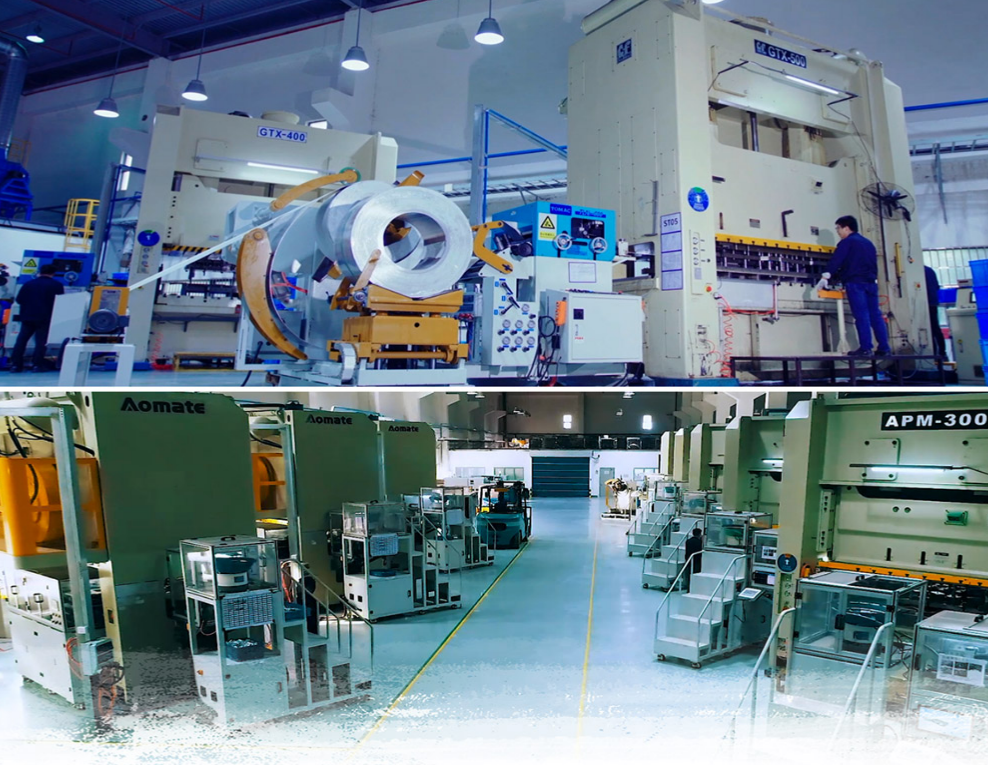
Leading Manufacturers by Region
North America:
- Acro Metal Stamping: A pioneer in the industry, Acro Metal Stamping operates from Wisconsin, ensuring precision and quality.
- Harvey Vogel Manufacturing Co.: Based out of Minnesota, they’ve been a stalwart in metal stamping since the 1940s.
Europe:
- Gestamp: This Spanish multinational is well-known for its innovative solutions in metal components for the automotive industry.
- Andritz AG: An Austrian firm that’s diversified in many sectors, but their metal stamping arm is among the best in the region.
Asia:
- Dongguan Fortuna Metal Stamping Company: One of China’s premier manufacturers, they’ve set a standard in precision and quality.
- Amada Co., Ltd.: Hailing from Japan, Amada is a giant in the metal processing equipment field.
South America:
- Bercar Industria: Brazil’s contribution to the metal stamping industry, they’ve been consistent in their quality and service.
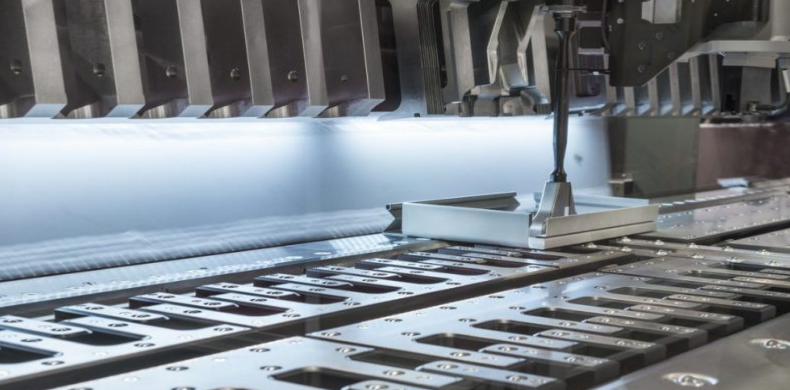
Comparative Analysis
While all the aforementioned brands have made significant contributions, they vary in certain dimensions:
Scale of Operations: Companies like Amada and Gestamp have a global footprint with operations and clients spread across multiple continents, whereas companies like Bercar Industria have a strong regional focus.
Innovation: Amada and Gestamp have been at the forefront in terms of technological advancements. Their R&D spending, as seen from their annual reports, is substantial.
Clientele: While most cater to a variety of sectors, the primary focus differs. For instance, Gestamp is more inclined towards automotive, while Amada has a broader approach, serving industries from electronics to infrastructure.
Sustainability: In the age of green manufacturing, companies like Andritz AG have made significant strides in sustainable operations, reducing their carbon footprint and promoting circular economy practices.
In conclusion, while each manufacturer has its unique strengths and specializations, they collectively push the boundaries of the metal stamping industry.
Selection Criteria for Metal Stamping Manufacturers
When it comes to choosing the right metal stamping manufacturer, the selection process should be meticulous and based on specific criteria. The right manufacturer can be the difference between the success or failure of a project. Here are some essential criteria to consider:
Experience and Reputation
Track Record: Before partnering with a manufacturer, it’s pivotal to delve into their past projects and clientele. A manufacturer with a proven track record over several years is more likely to deliver consistent quality.
Customer Testimonials: Go beyond the manufacturer’s website. Research third-party review sites, industry forums, and even LinkedIn for candid feedback from past clients.
Industry Recognition: Awards, commendations, or recognitions from industry bodies can provide an insight into their reputation in the market.
Quality Certifications
ISO Certification: The ISO 9001 certification, for instance, signifies that the manufacturer adheres to international standards of quality and continuous improvement.
Material Certifications: Depending on the project, certain material certifications may be necessary. These ensure that the raw materials used are up to industry standards.
Technical Capabilities
Machinery and Technology: The machinery and technology employed by the manufacturer can be a testament to their capability. Leading-edge machines and software indicate their commitment to quality and precision.
Research and Development: Manufacturers who invest in R&D often bring innovative solutions and can adapt to unique project needs.
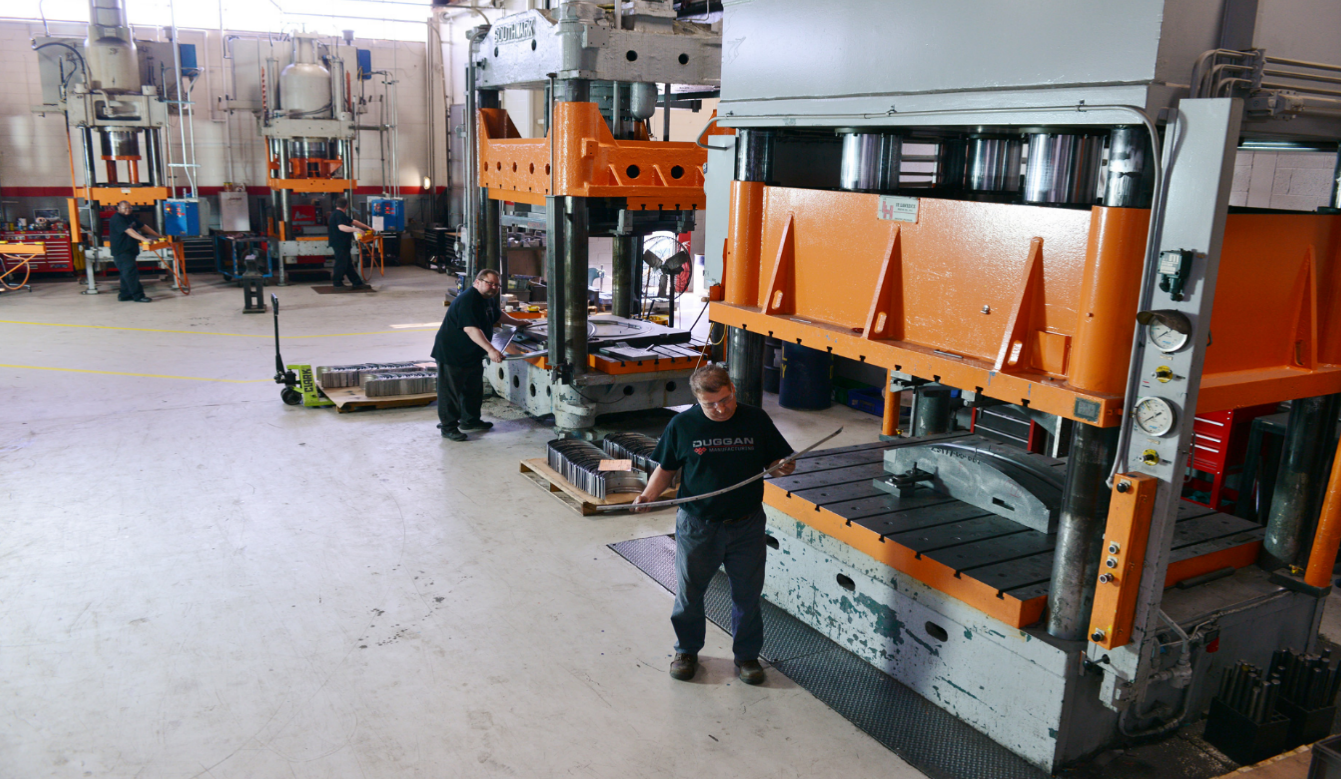
Pricing Structures
Transparency: A transparent pricing structure, without hidden costs, is a sign of a trustworthy manufacturer.
Competitiveness: While the lowest price may be tempting, it’s essential to balance cost with quality. An unusually low price might indicate compromises in other areas.
Lead Times and Delivery
Punctuality: A manufacturer’s ability to stick to delivery timelines consistently is crucial, especially for projects with tight schedules.
Logistics and Shipping: Consider their shipping partners, delivery methods, and how they handle international logistics if your project requires cross-border deliveries.
In summation, the ideal metal stamping manufacturer should strike a balance between quality, cost, and delivery timelines. Always prioritize open communication and ensure that they align with your project’s specific needs.
Types of Metal Stamping
Metal stamping represents a diverse set of techniques employed to shape and mold metals into desired shapes and sizes. Each type of metal stamping process offers unique benefits and is suitable for specific applications. Here’s a closer look at some of the primary methods:
Progressive Die Stamping
In the progressive die stamping process, the sheet metal feeds through a series of stamping stations. Each station performs a specific task, and by the end, the metal transforms into the desired part. This process is especially beneficial for high-volume production runs due to its speed and efficiency. Industries like automotive and electronics often utilize this method.
Compound Die Stamping
Compound die stamping uses a single press cycle to achieve the desired shape. This method is perfect for parts that need specific, intricate details. It excels in producing symmetrical and non-symmetrical parts alike. Watches, jewelry, and certain electronic components often involve compound die stamping.
Transfer Die Stamping
Transfer die stamping moves the metal from one station to the next using mechanical transports. This method is ideal for medium to large parts and can handle heavier metal materials efficiently. Aerospace and automotive manufacturers frequently choose this process for its precision and ability to handle complex parts.
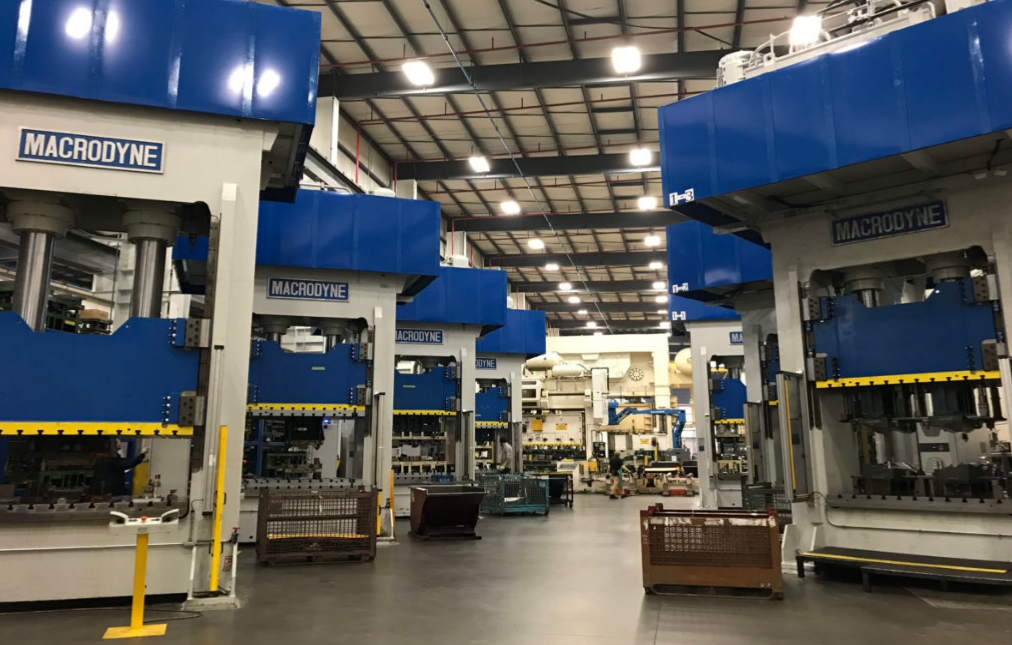
Deep Draw Stamping
Deep draw stamping pushes or draws sheet metal into a die to achieve a three-dimensional shape. The name comes from its capability to produce parts deeper than their diameter. It excels in creating cylindrical components such as cans, tanks, and certain automotive parts. The cookware industry also relies heavily on this method for pots and pans.
Four-slide Stamping
Four-slide stamping, or multi-slide stamping, uses horizontal alignment to shape the metal. It employs four sliding tools to shape the workpiece from multiple directions simultaneously. This method is ideal for intricate parts that require bending at various angles. Electrical contacts, wire forms, and clips often result from four-slide stamping.
In essence, the choice of metal stamping technique largely depends on the complexity, volume, and specifications of the part. Understanding the nuances of each method ensures the optimal process selection, leading to high-quality results and cost-effective production.
Materials Used in Metal Stamping
Metal stamping forms the backbone of various industries, from automotive to electronics. The choice of material plays a pivotal role in determining the durability, strength, and functionality of the stamped part. Here’s a deep dive into the most popular materials used in this process:
Steel and its Alloys
Steel, primarily an alloy of iron and carbon, offers a versatile range for stamping due to its varying hardness and strengths. Commonly used varieties include:
- Carbon Steel: Known for its strength and malleability, it’s a top choice for parts requiring resilience.
- Stainless Steel: Resistant to corrosion and staining, stainless steel suits applications exposed to adverse conditions like kitchen utensils or medical instruments.
- Alloy Steel: By adding elements such as chromium, molybdenum, or nickel, alloy steels exhibit enhanced properties like better corrosion resistance or increased strength.
Aluminum
Aluminum stands out for its lightweight and rust-resistant properties. It’s malleable, making it ideal for intricate stamping processes. Industries such as aerospace, automotive, and consumer electronics often employ aluminum due to its excellent strength-to-weight ratio.
Brass
Brass, an alloy of copper and zinc, boasts excellent thermal conductivity and corrosion resistance. Its gold-like appearance makes it a favorite for decorative pieces, but its functionality extends to electrical connectors, ammunition casings, and musical instruments.
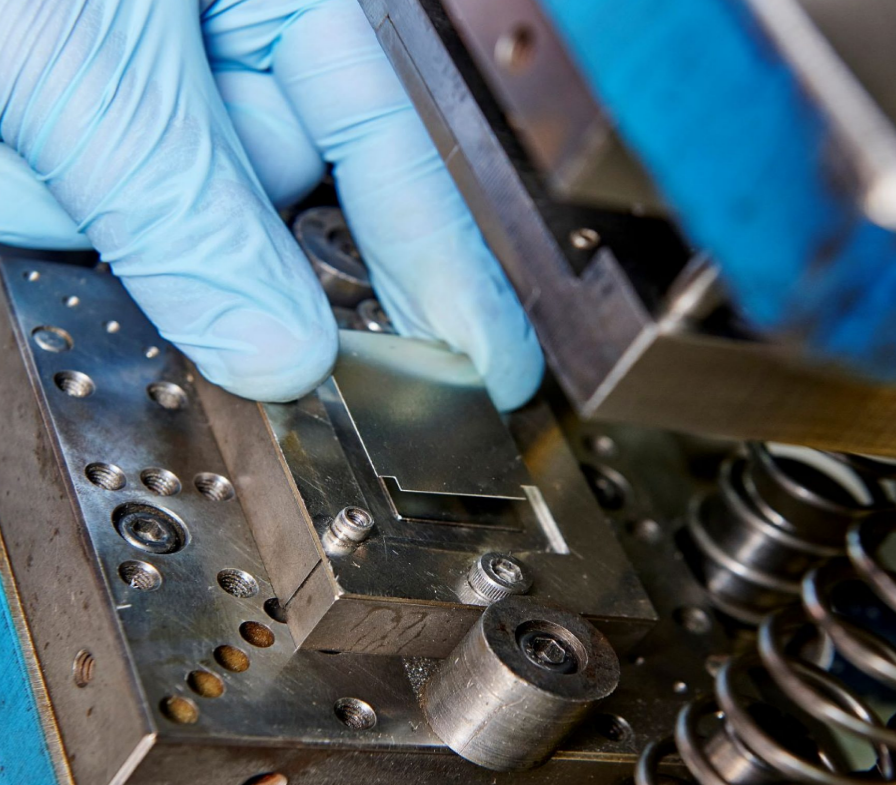
Copper
Known for its exceptional conductivity, copper often finds its way into electrical components. It’s malleable and resistant to corrosion, ensuring durability. Beyond electronics, copper’s antimicrobial properties make it a preferred choice for medical tools and facilities.
Titanium
Titanium offers an impressive strength-to-weight ratio and resistance to corrosion, even from saltwater. These properties make it invaluable for aerospace, marine applications, and medical implants. Its biocompatibility ensures that the human body doesn’t reject it, making it ideal for surgical instruments and prosthetics.
To summarize, the material chosen in metal stamping must align with the desired attributes of the final product. Whether prioritizing strength, conductivity, appearance, or corrosion resistance, each material brings its unique set of advantages to the table.
Processes & Techniques
The realm of metal stamping comprises a wide array of processes and techniques, each tailored for specific applications. These methods manipulate metal sheets into various shapes, sizes, and designs, catering to a vast array of industries. Let’s delve into these techniques to understand their individual nuances:
Blanking
Blanking is a process where a metal sheet is punched in one stroke to remove a part from the primary material. The extracted piece, termed as the “blank,” often serves as a workpiece for further processes. This method ensures precise and consistent parts, making it invaluable for producing components in bulk, such as in the automotive industry.
Embossing
Embossing imparts a raised or recessed relief on the surface of the metal. By pressing the metal sheet between two matching dies, intricate designs or patterns emerge on the material. This technique enhances the aesthetics and can also augment the strength of the piece. It’s commonly found in decorative elements, badges, or emblems.
Bending
Bending reshapes the metal sheet by applying force without changing its volume. It’s a versatile technique, with the capability to produce simple to complex geometries. From creating angles in brackets to shaping intricate profiles for aircraft components, bending caters to a myriad of applications.
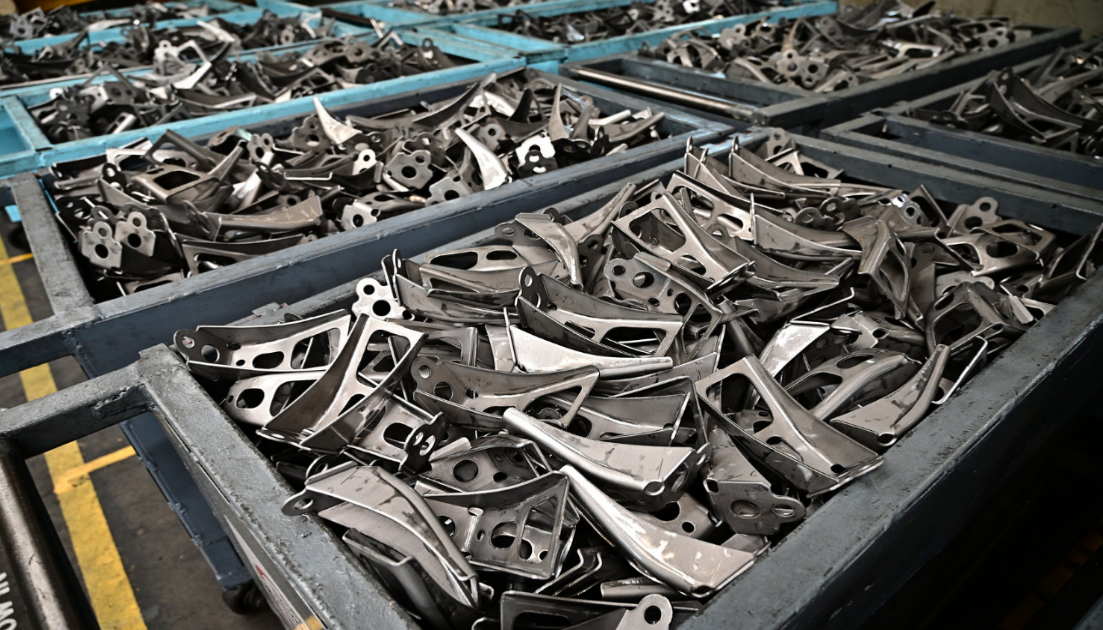
Coining
Coining exerts high force on the metal sheet, causing it to conform to the die’s shape in intricate detail. As the name suggests, this method plays a pivotal role in minting coins. Beyond numismatics, coining finds applications in creating detailed logos or features on parts, ensuring precision down to minute details.
Flanging
Flanging bends the metal along a curved axis. The result is a flange, a rim or a rib, which can enhance the part’s strength or facilitate its attachment to another component. It’s often employed in ductwork, aerospace structures, and automotive parts.
Punching
Punching creates holes or designs in the metal sheet by pressing a tool, known as a punch, through the material and into a die. This process can produce a variety of hole shapes and sizes, and the removed material, termed as “scrap,” gets discarded or recycled. Punching is ubiquitous, seen in everything from household appliances to industrial machinery.
In essence, the choice of metal stamping process largely hinges on the desired features, functions, and aesthetics of the final product. Each technique, with its distinct advantages, ensures that the metal transforms to meet specific requirements efficiently.
Applications of Metal Stamped Parts
Metal stamped parts serve as the unsung heroes in a plethora of industries, playing pivotal roles in the function and structure of countless products. Here’s a detailed look at how these components shape various sectors:

Automotive Industry
The automotive industry heavily relies on metal stamped parts for a wide array of components. From intricate engine parts to large body panels, stamping provides the precision and scale that this sector demands. Elements like fenders, hoods, and door panels result from large-scale stamping processes, ensuring consistency across thousands of vehicles. Moreover, smaller components like brackets, hubcaps, and even the connectors in electrical systems benefit from the precision of metal stamping.
Electronics
In the world of electronics, metal stamped parts facilitate connections, provide shielding, and even serve as heat sinks. Connectors and terminals, made through precision stamping, ensure seamless electrical connections in devices. Furthermore, metal casings protect sensitive components and offer an aesthetic appeal to gadgets like smartphones, tablets, and computers.
Aerospace
The aerospace sector demands high precision and reliability. Metal stamped parts meet these exacting standards, providing components for aircraft engines, fuselages, and instrumentation. Lightweight materials like titanium and aluminum often undergo stamping to produce parts that can withstand the rigors of flight without adding unnecessary weight. Fasteners, brackets, and even interior cabin components result from intricate stamping processes.
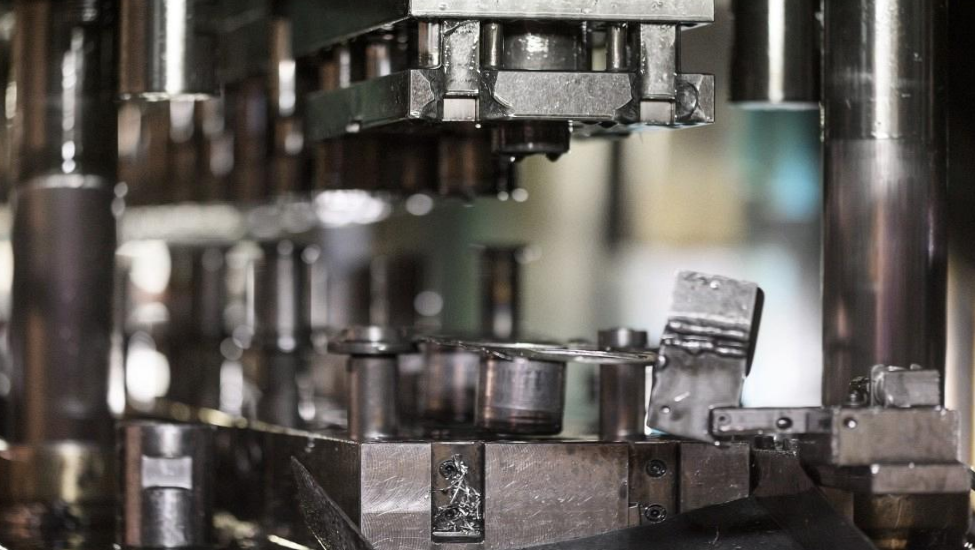
Medical Devices
Accuracy is paramount in medical devices, and metal stamping delivers. Surgical instruments, like scalpels and forceps, benefit from the precision of stamping. Moreover, components of larger machines, such as MRI machines and X-ray devices, contain metal stamped parts to ensure their flawless function. Implants, which require biocompatible metals like titanium, are often shaped and sized using specialized stamping techniques.
Consumer Goods
From household appliances to everyday tools, metal stamped parts shape the consumer landscape. The metal body of a toaster, the battery compartment of a remote control, or even the blades in a blender owe their existence to stamping processes. Beyond functionality, stamping also influences design aesthetics, helping brands establish their unique identities in the market.
In summary, metal stamped parts find their way into nearly every facet of modern life. Their versatility, combined with the precision and scalability of stamping processes, ensures that industries continue to lean on them for their most crucial components.
